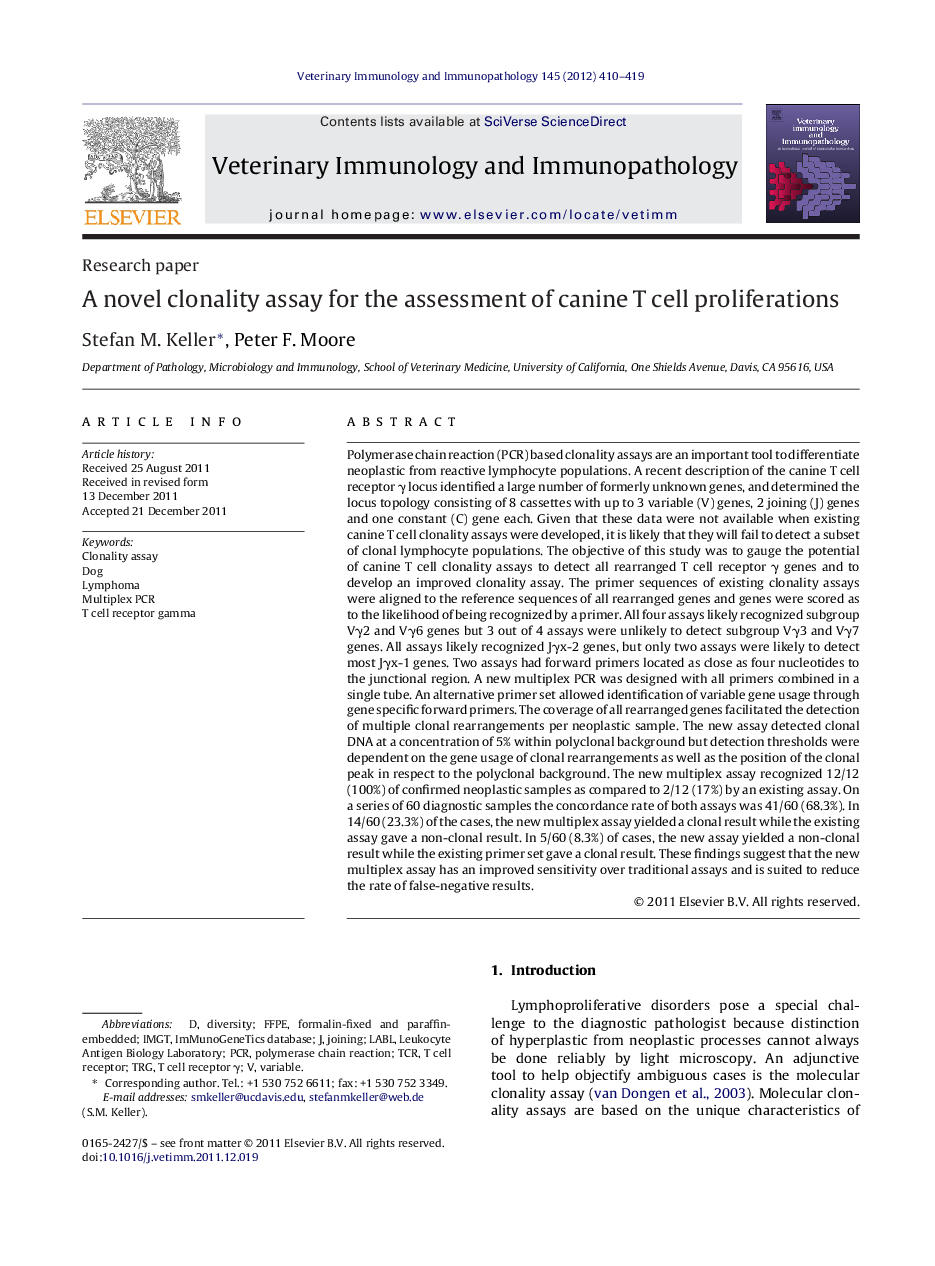| کد مقاله | کد نشریه | سال انتشار | مقاله انگلیسی | نسخه تمام متن |
|---|---|---|---|---|
| 2461943 | 1555061 | 2012 | 10 صفحه PDF | دانلود رایگان |

Polymerase chain reaction (PCR) based clonality assays are an important tool to differentiate neoplastic from reactive lymphocyte populations. A recent description of the canine T cell receptor γ locus identified a large number of formerly unknown genes, and determined the locus topology consisting of 8 cassettes with up to 3 variable (V) genes, 2 joining (J) genes and one constant (C) gene each. Given that these data were not available when existing canine T cell clonality assays were developed, it is likely that they will fail to detect a subset of clonal lymphocyte populations. The objective of this study was to gauge the potential of canine T cell clonality assays to detect all rearranged T cell receptor γ genes and to develop an improved clonality assay. The primer sequences of existing clonality assays were aligned to the reference sequences of all rearranged genes and genes were scored as to the likelihood of being recognized by a primer. All four assays likely recognized subgroup Vγ2 and Vγ6 genes but 3 out of 4 assays were unlikely to detect subgroup Vγ3 and Vγ7 genes. All assays likely recognized Jγx-2 genes, but only two assays were likely to detect most Jγx-1 genes. Two assays had forward primers located as close as four nucleotides to the junctional region. A new multiplex PCR was designed with all primers combined in a single tube. An alternative primer set allowed identification of variable gene usage through gene specific forward primers. The coverage of all rearranged genes facilitated the detection of multiple clonal rearrangements per neoplastic sample. The new assay detected clonal DNA at a concentration of 5% within polyclonal background but detection thresholds were dependent on the gene usage of clonal rearrangements as well as the position of the clonal peak in respect to the polyclonal background. The new multiplex assay recognized 12/12 (100%) of confirmed neoplastic samples as compared to 2/12 (17%) by an existing assay. On a series of 60 diagnostic samples the concordance rate of both assays was 41/60 (68.3%). In 14/60 (23.3%) of the cases, the new multiplex assay yielded a clonal result while the existing assay gave a non-clonal result. In 5/60 (8.3%) of cases, the new assay yielded a non-clonal result while the existing primer set gave a clonal result. These findings suggest that the new multiplex assay has an improved sensitivity over traditional assays and is suited to reduce the rate of false-negative results.
Journal: Veterinary Immunology and Immunopathology - Volume 145, Issues 1–2, 15 January 2012, Pages 410–419